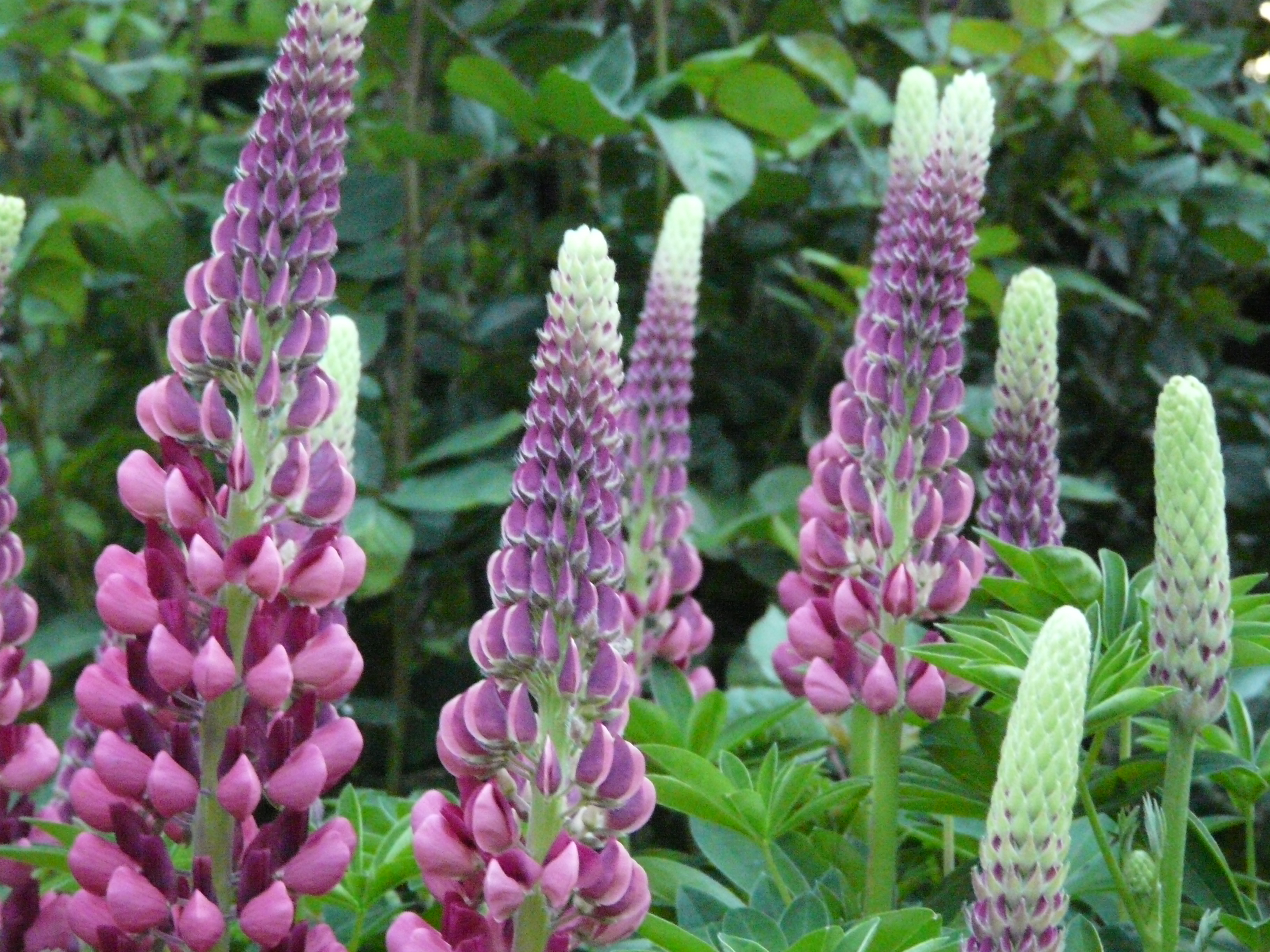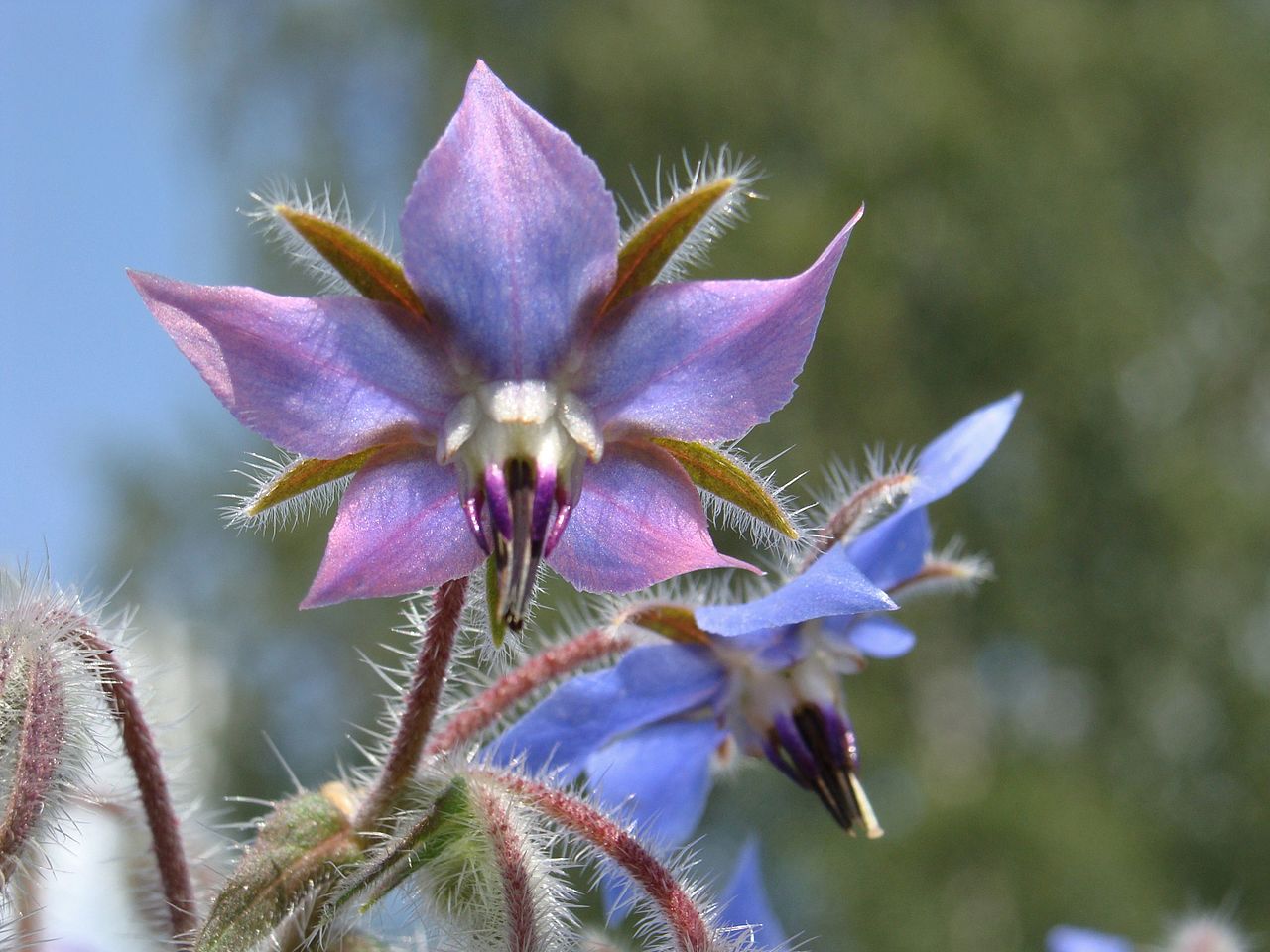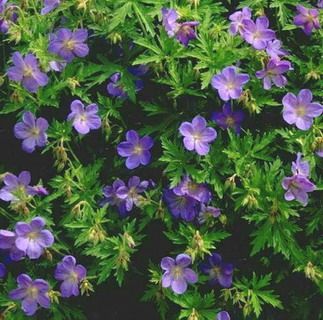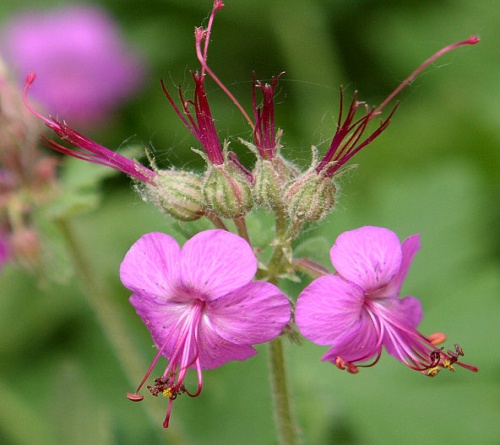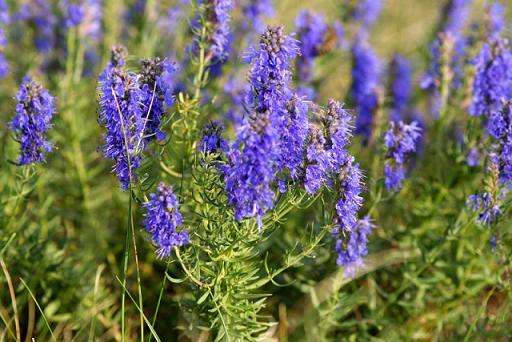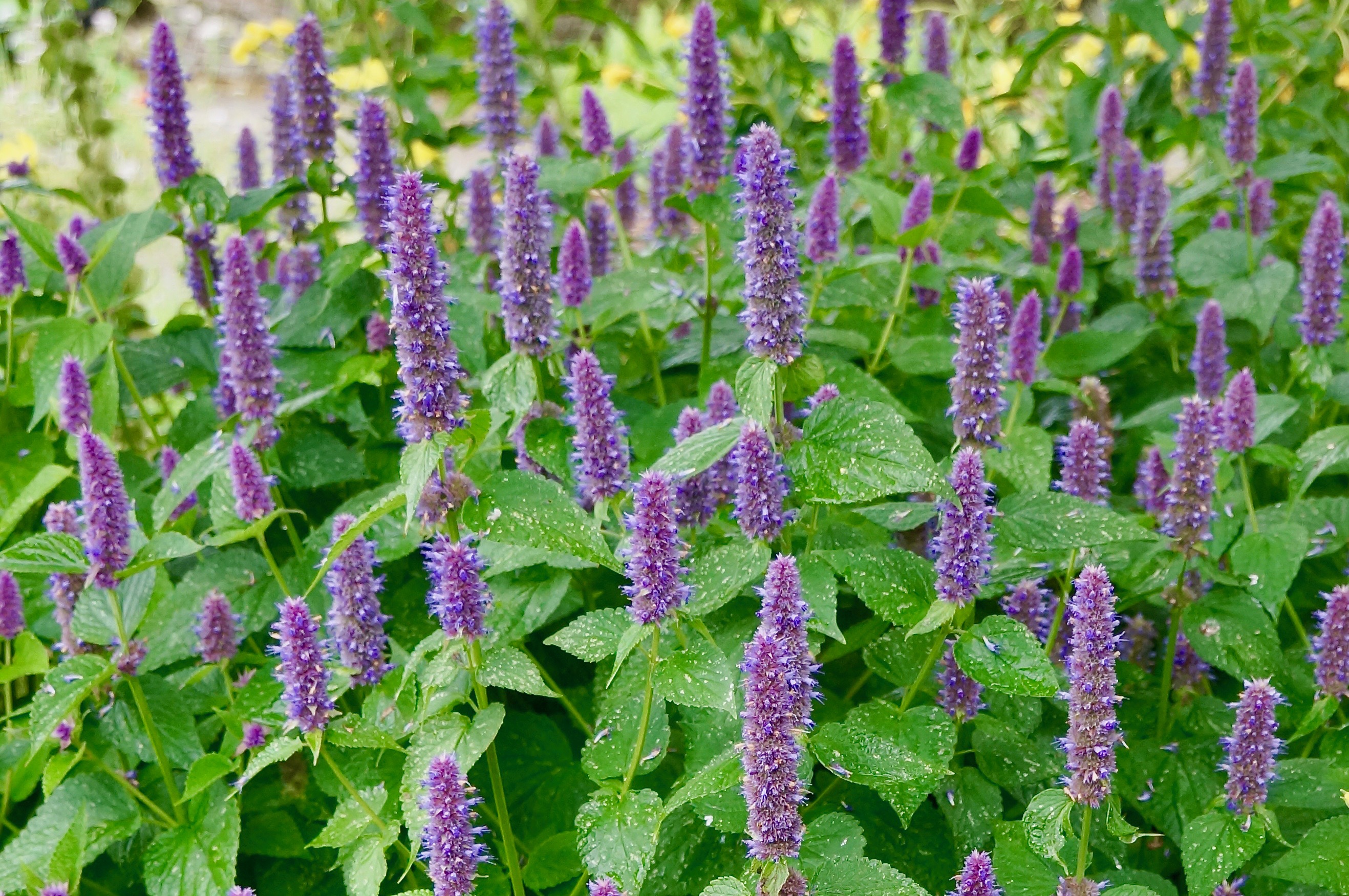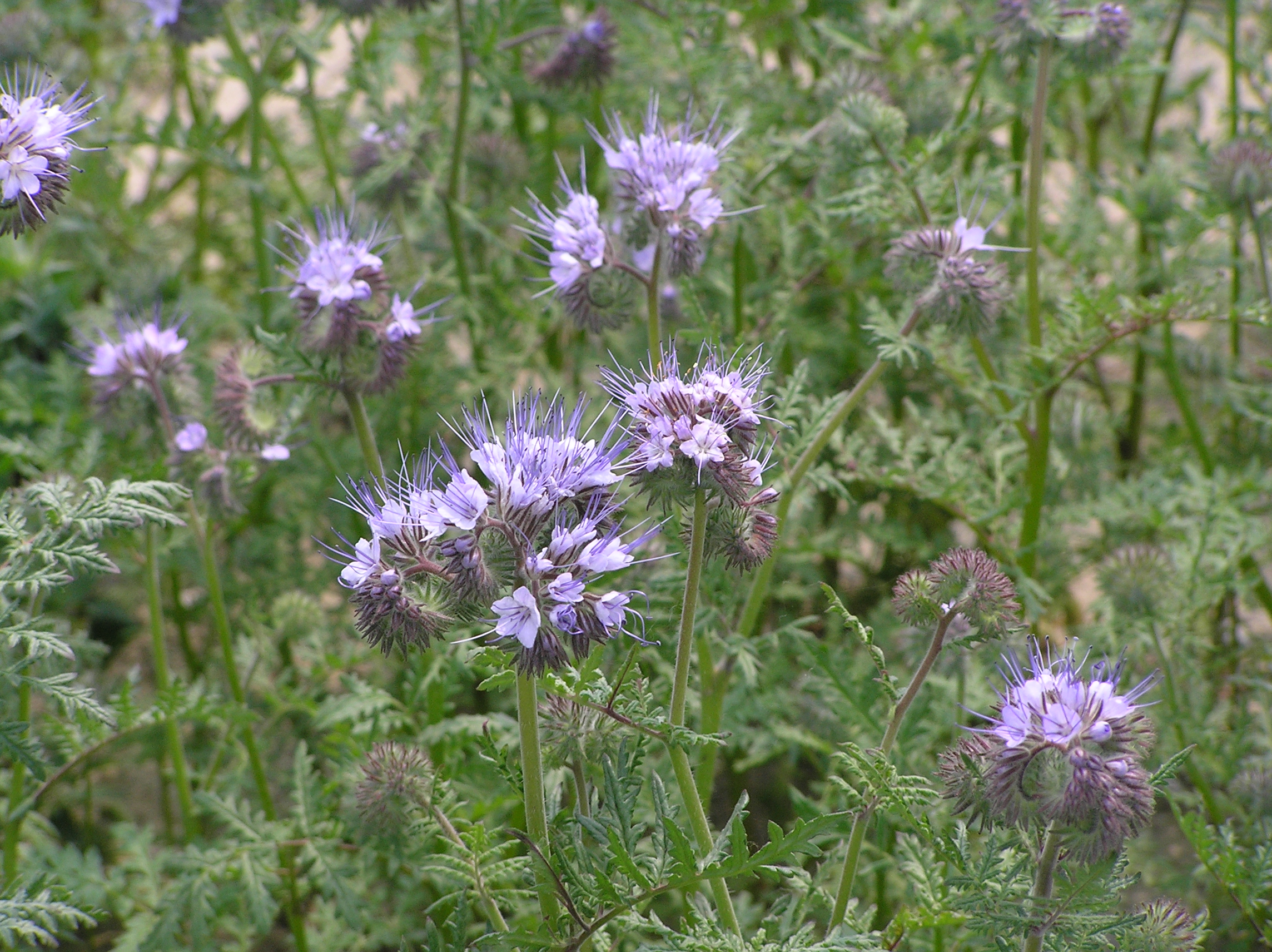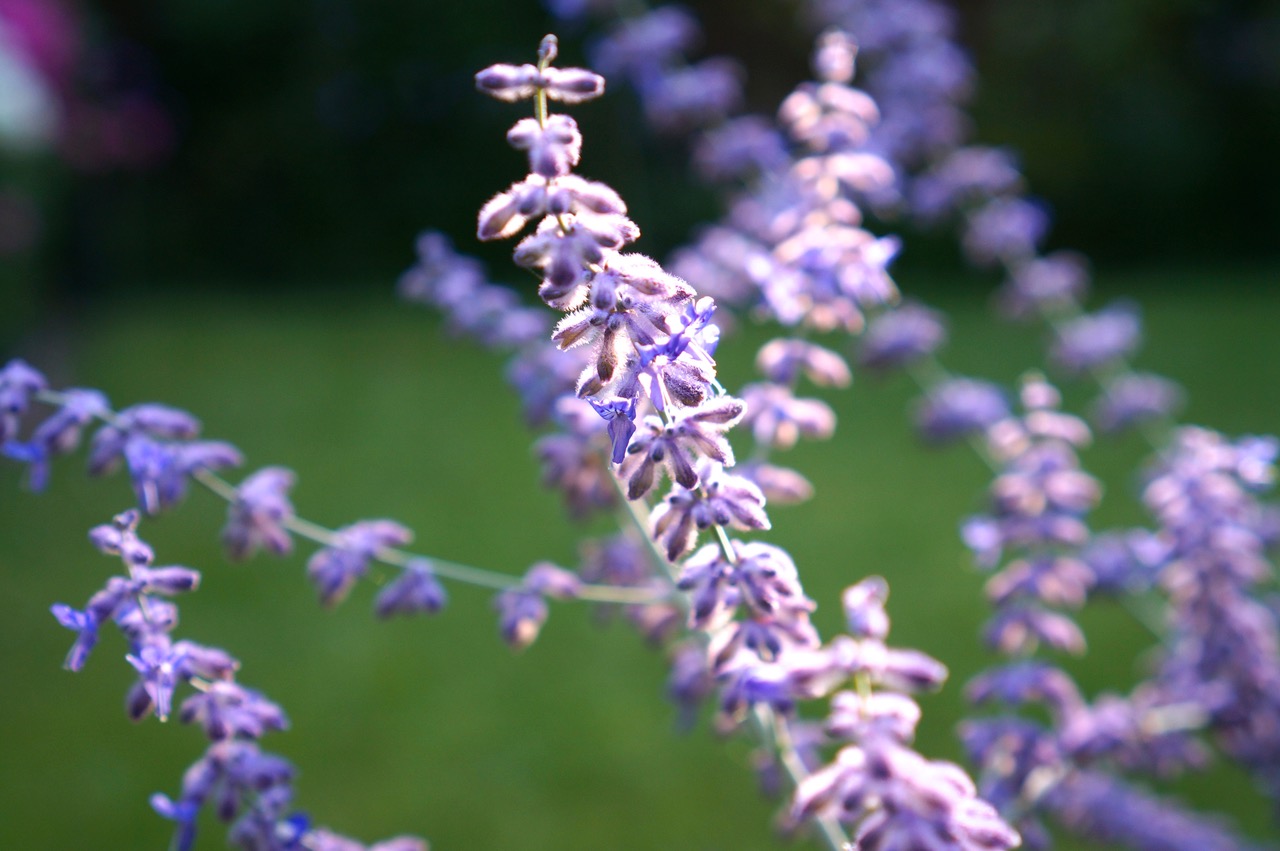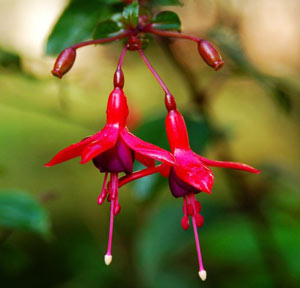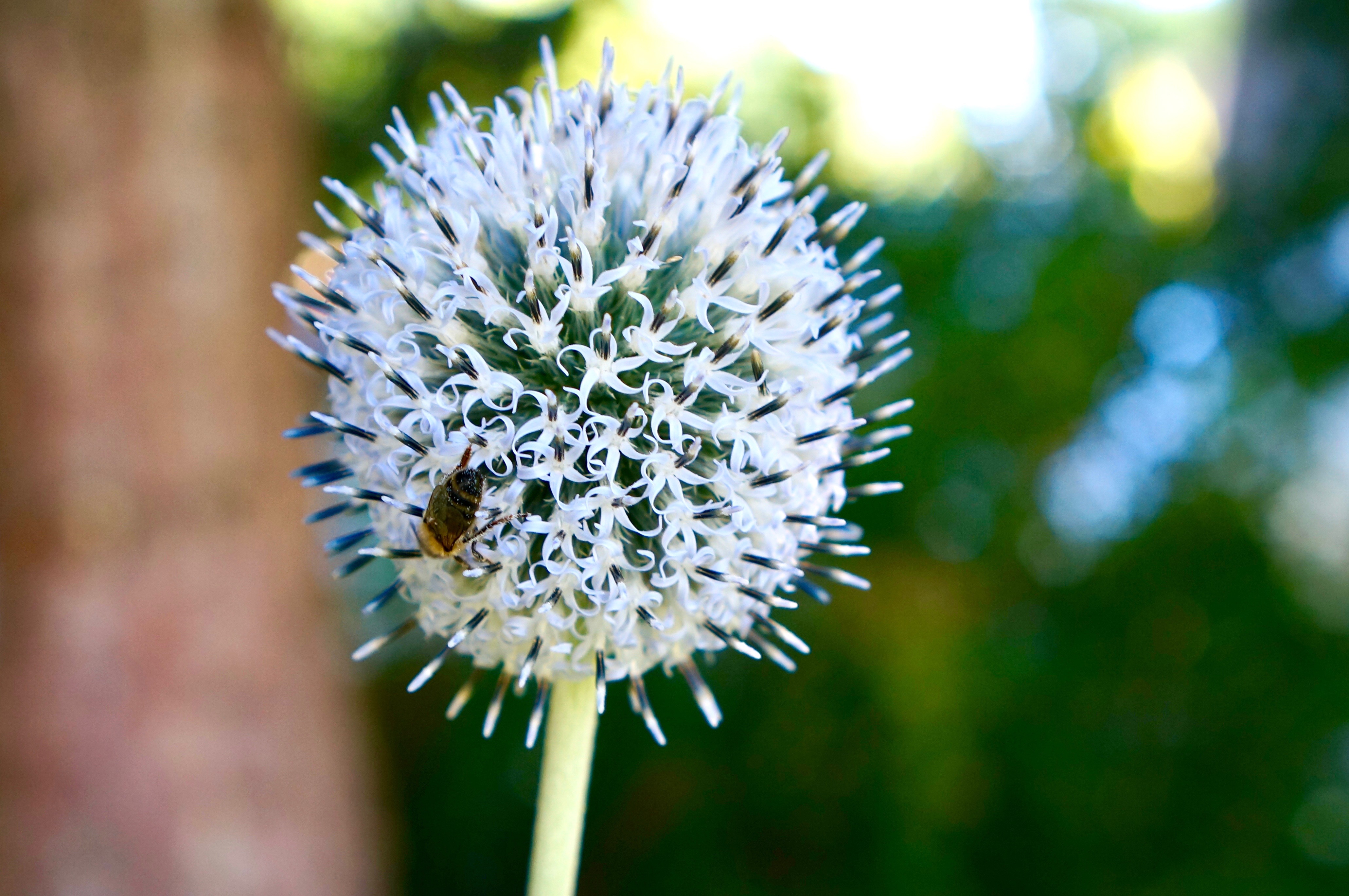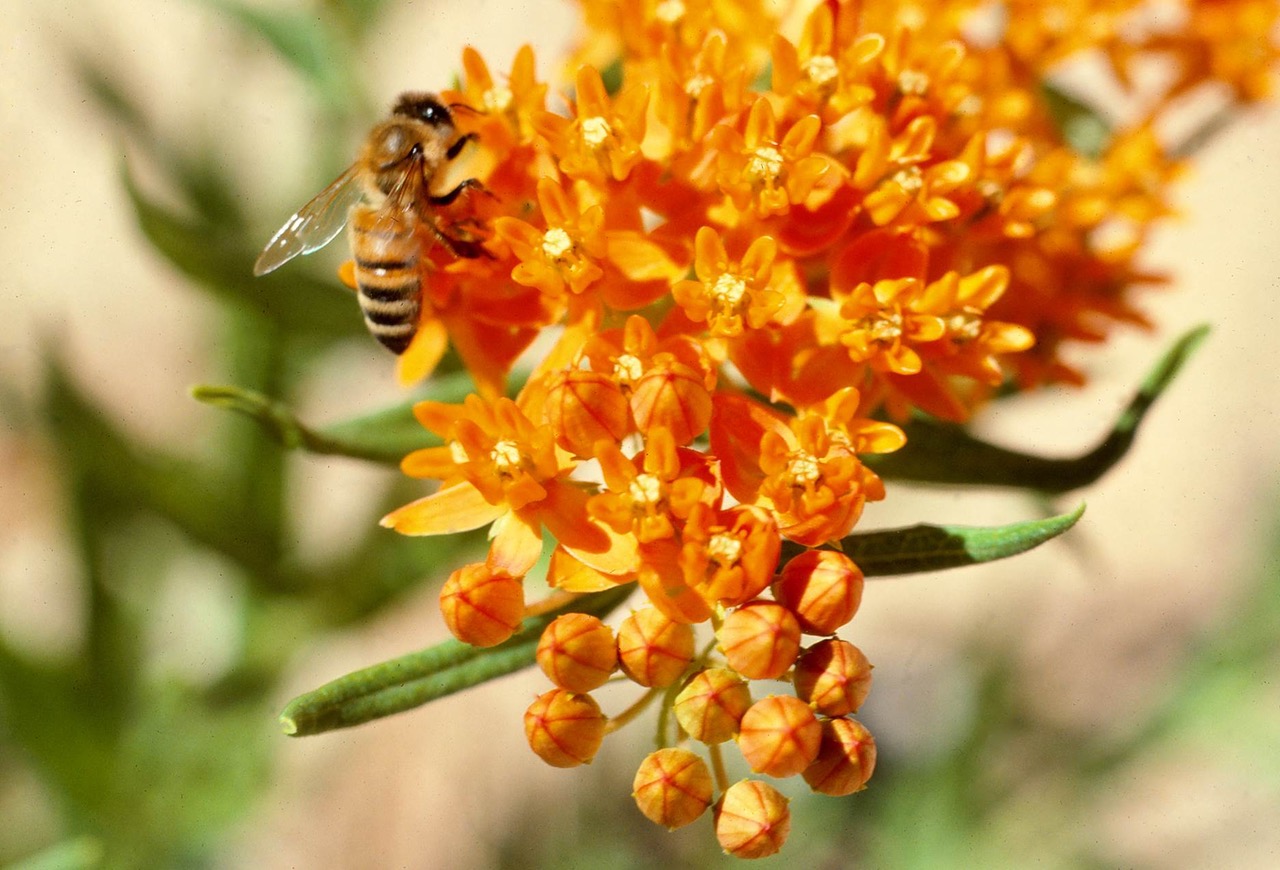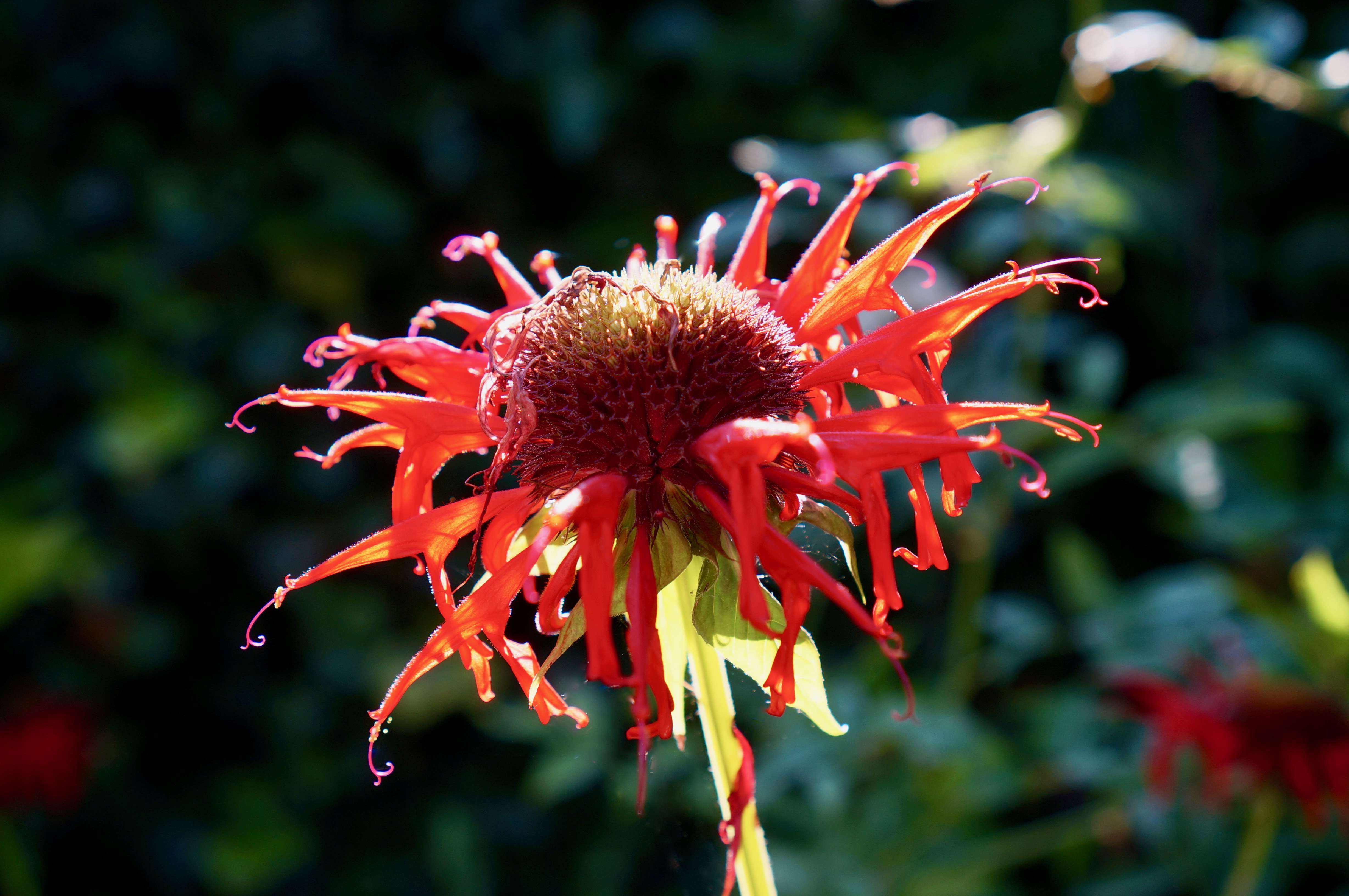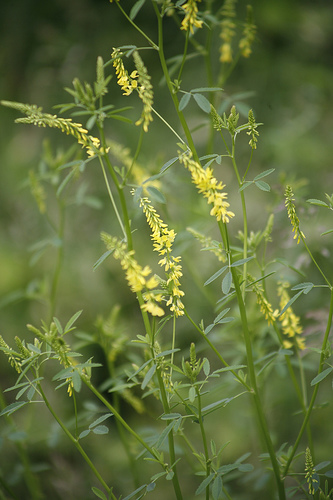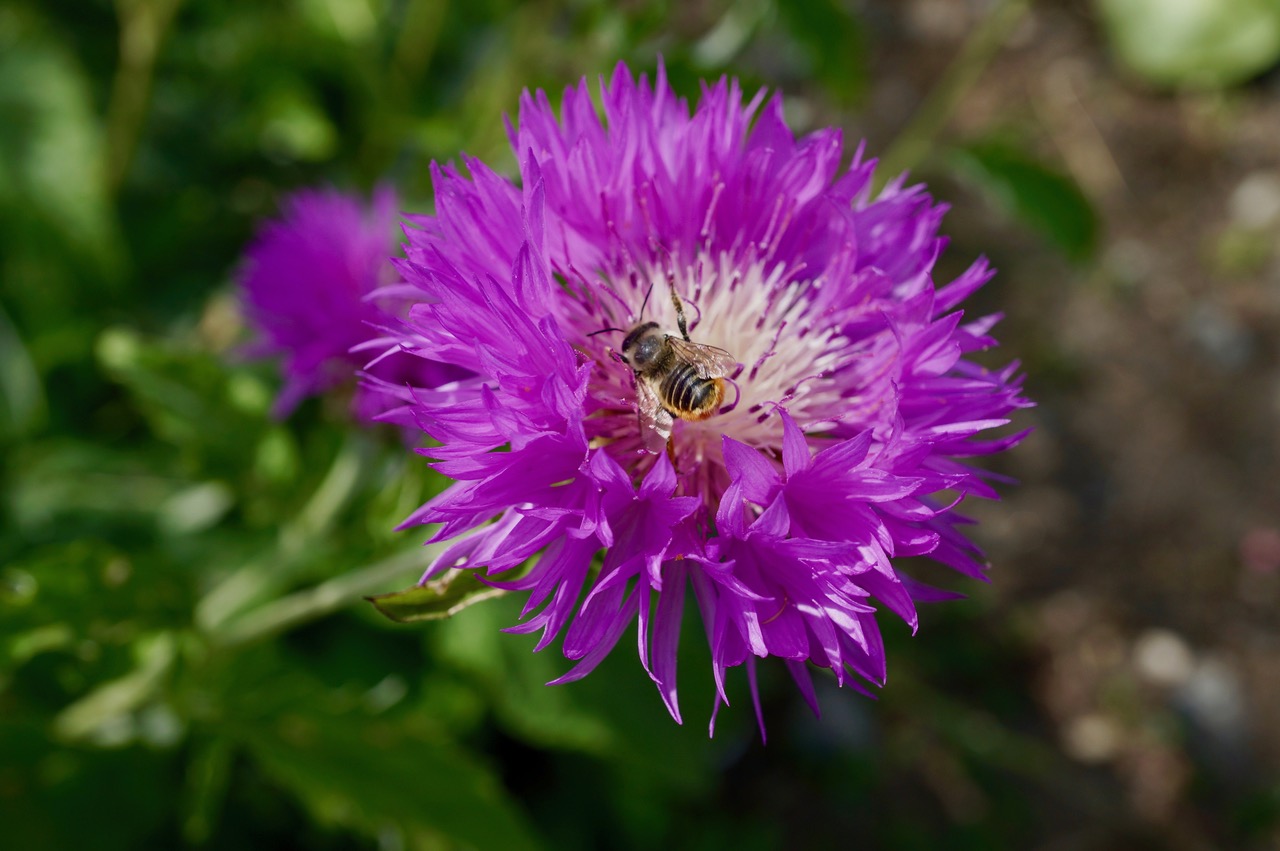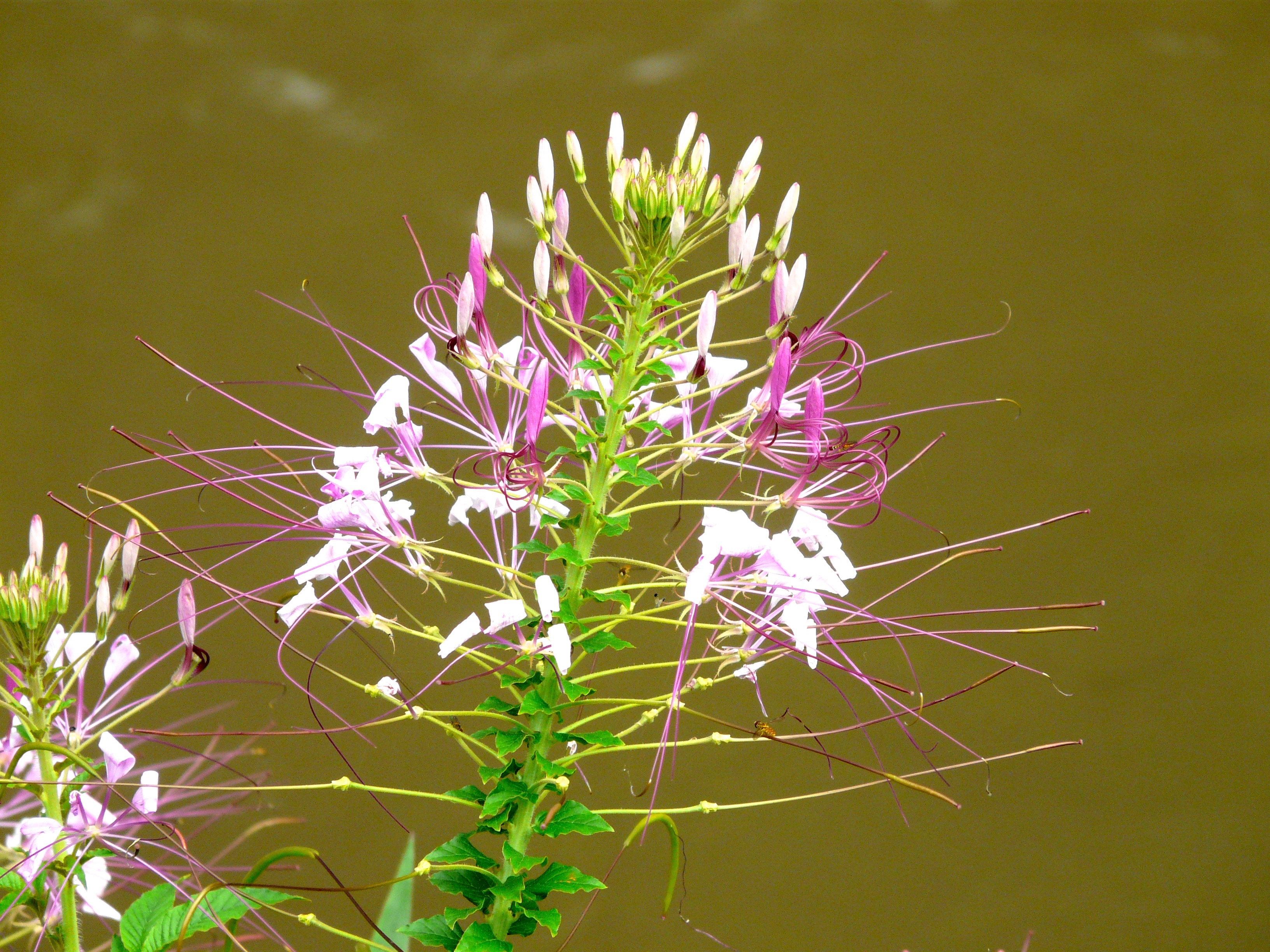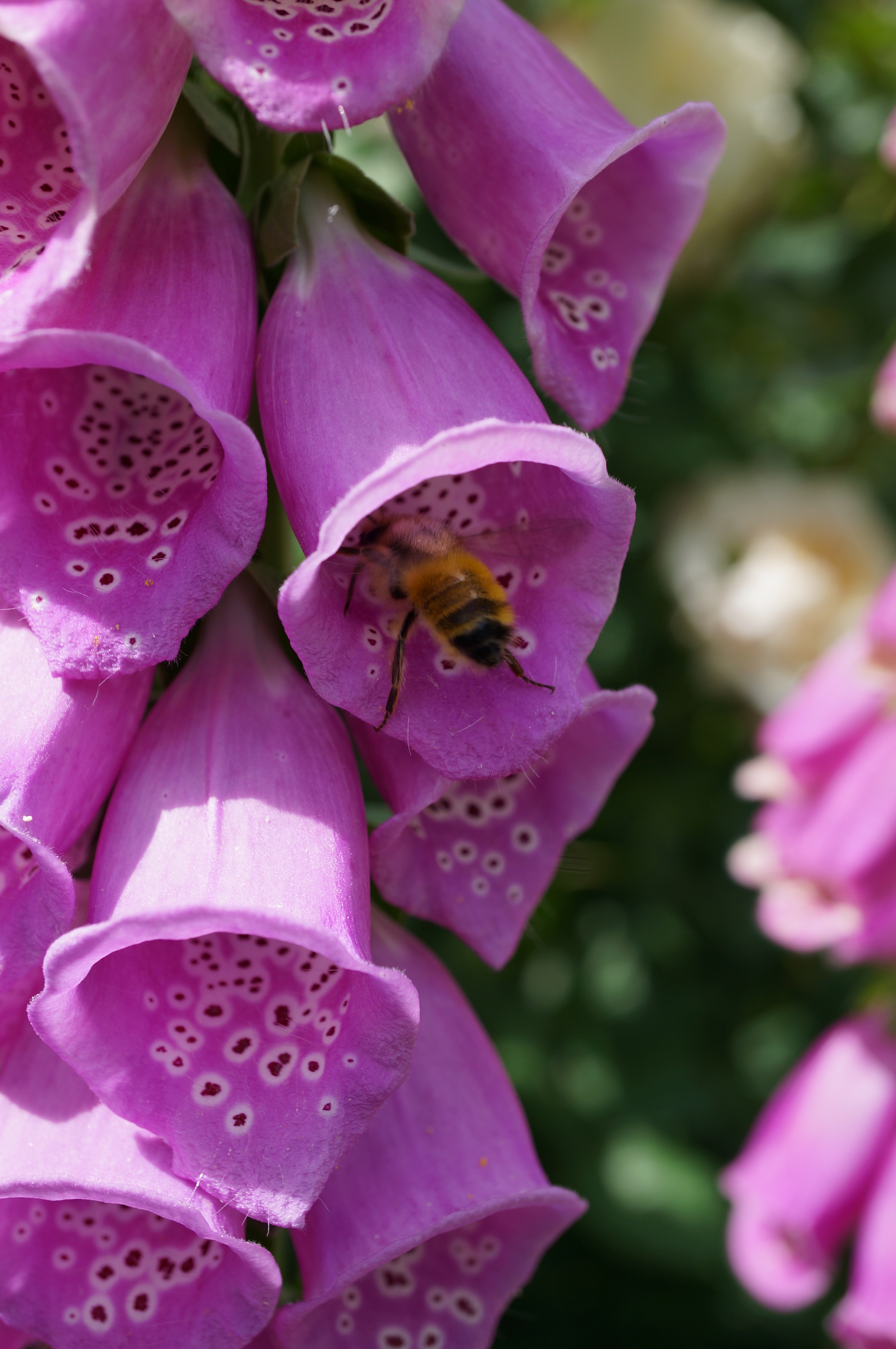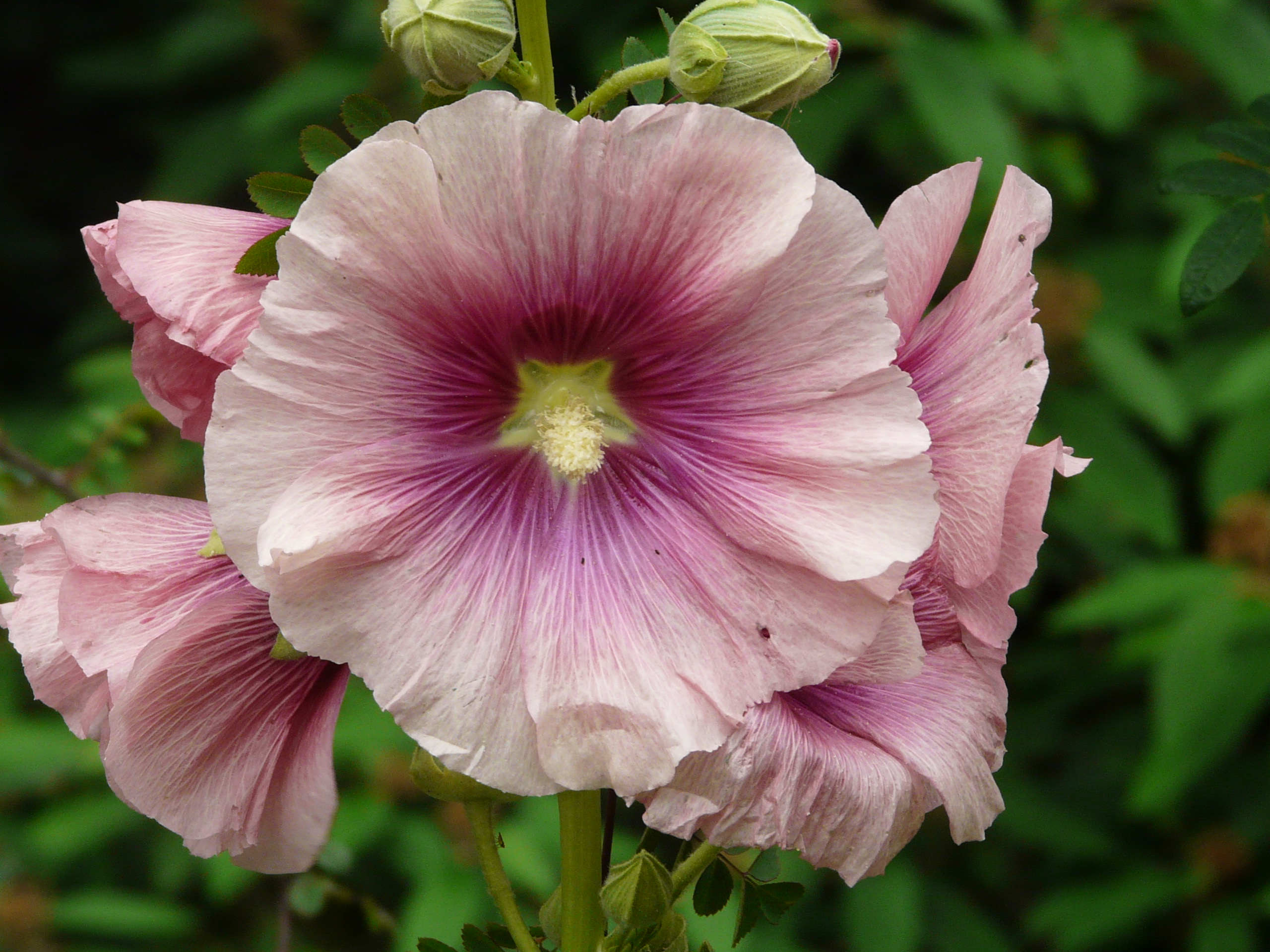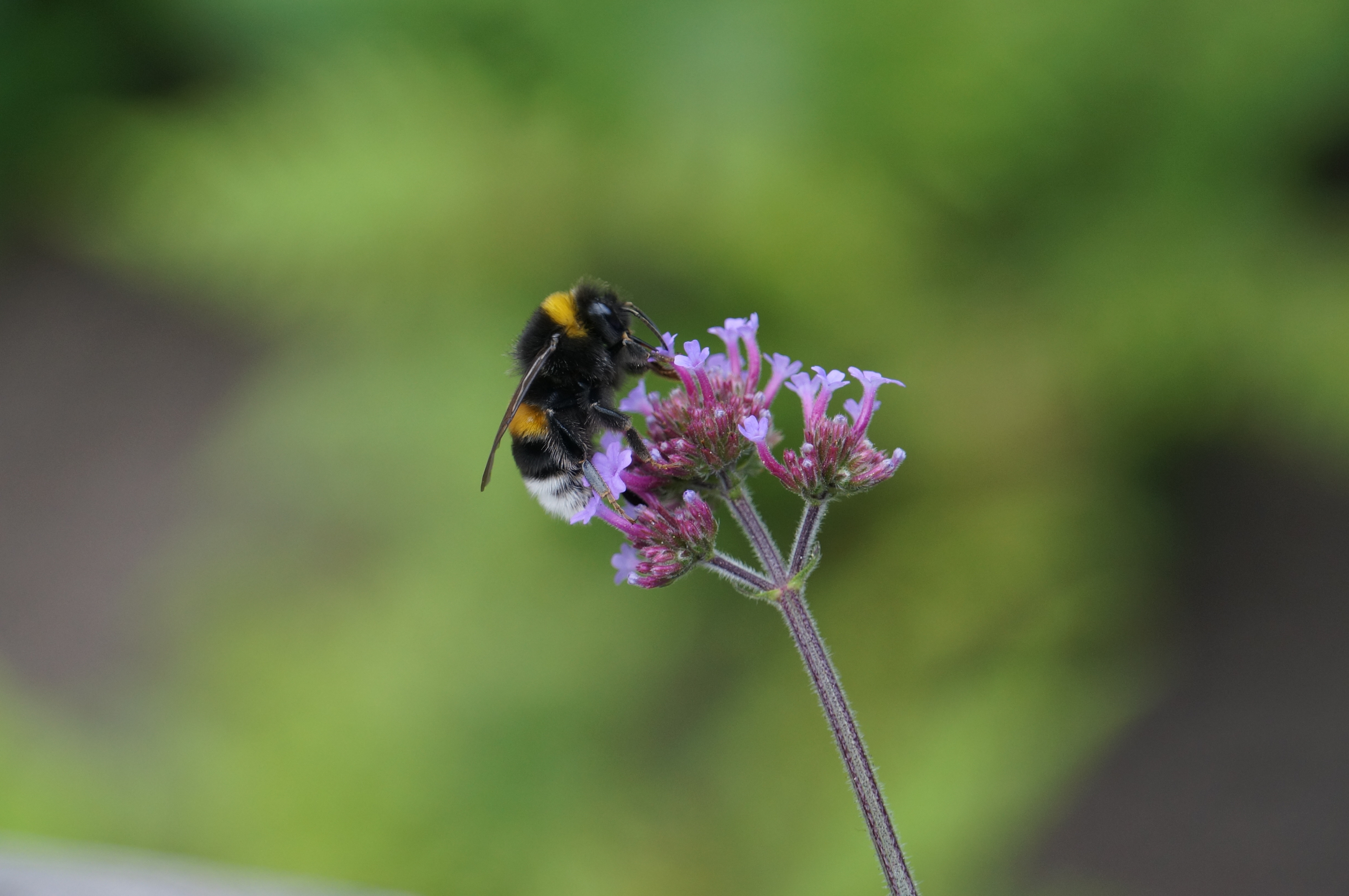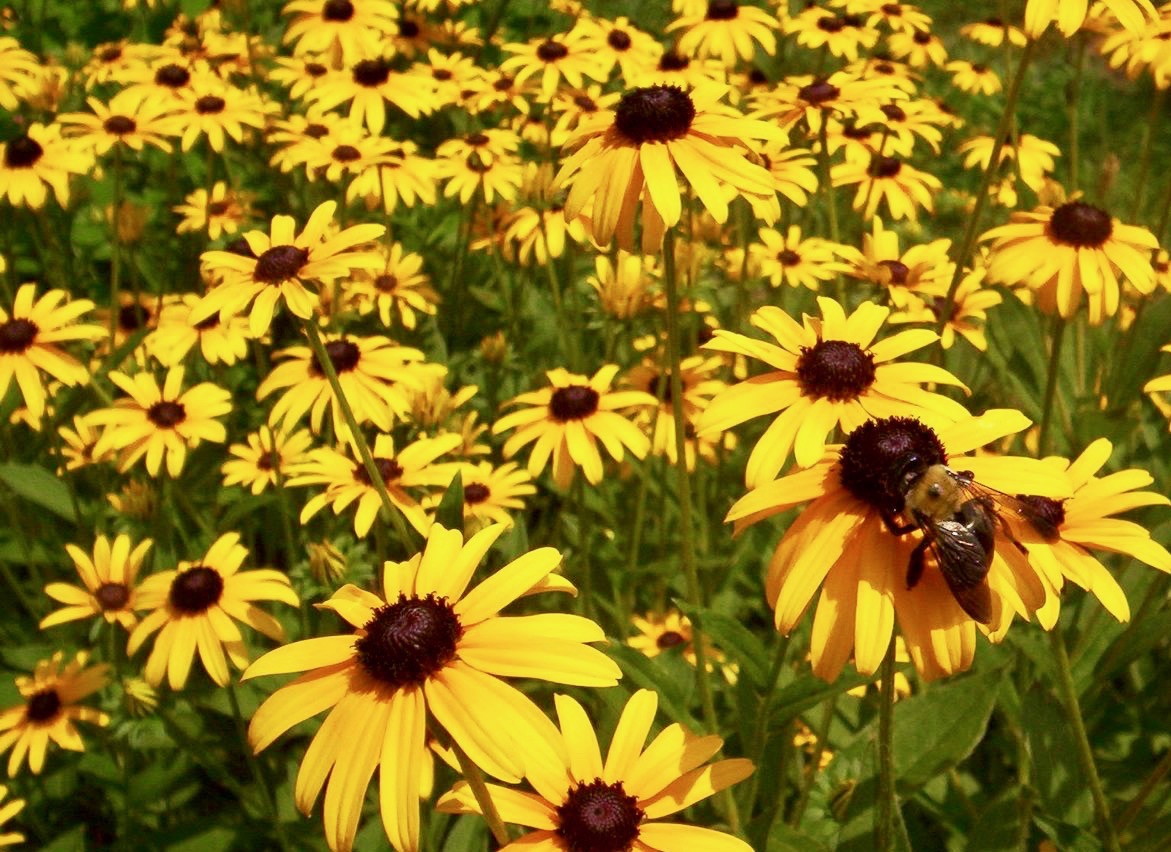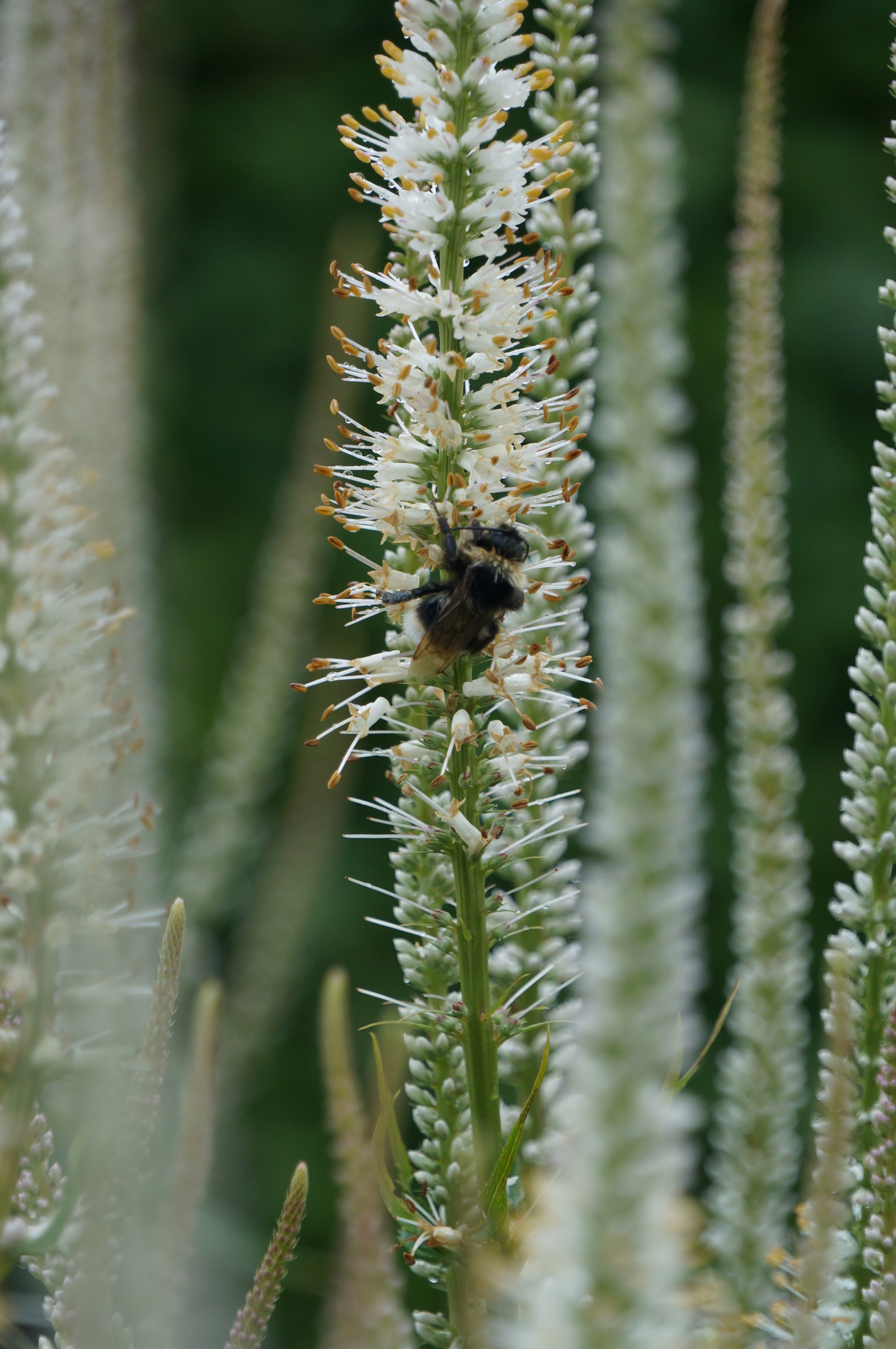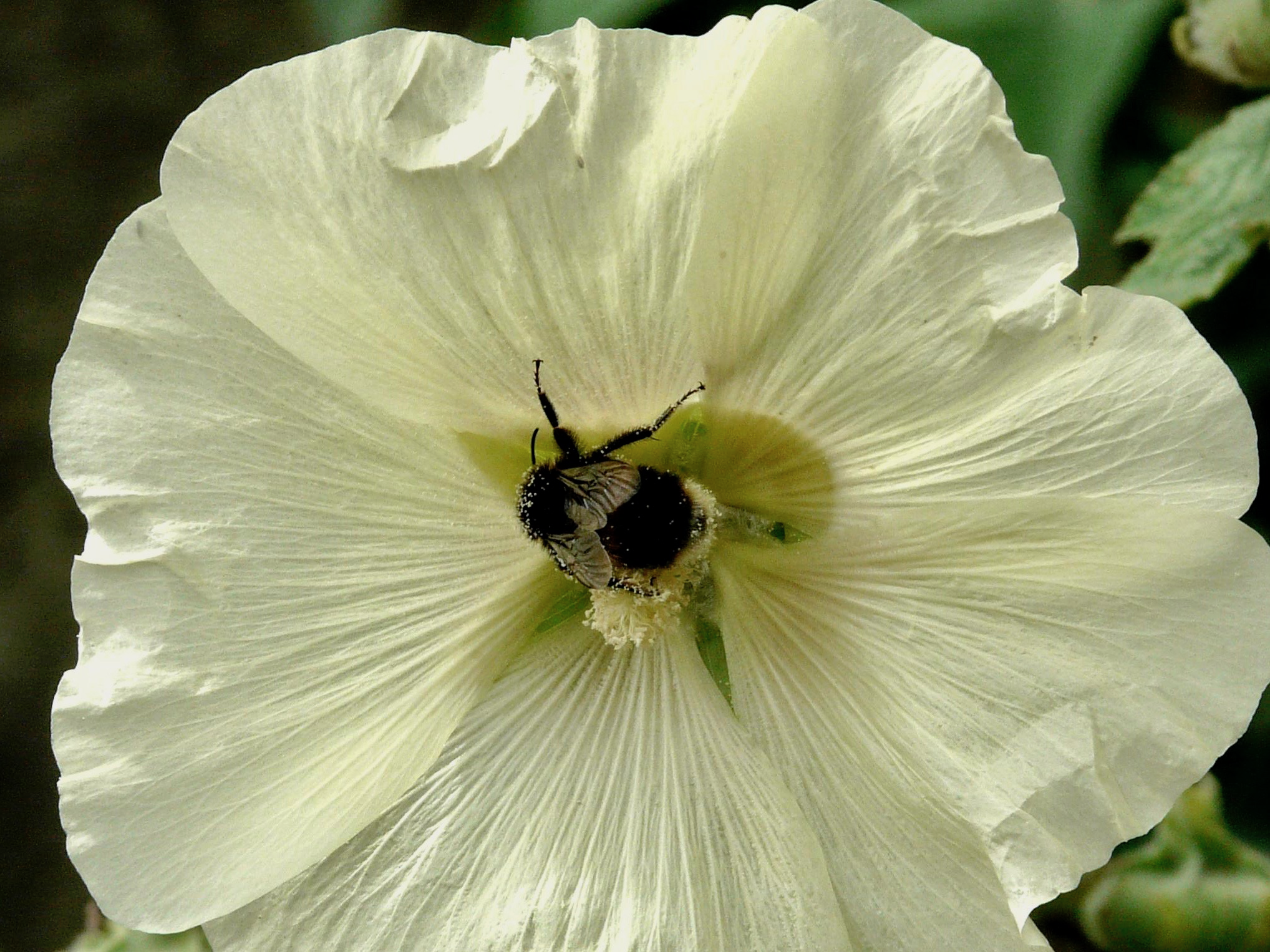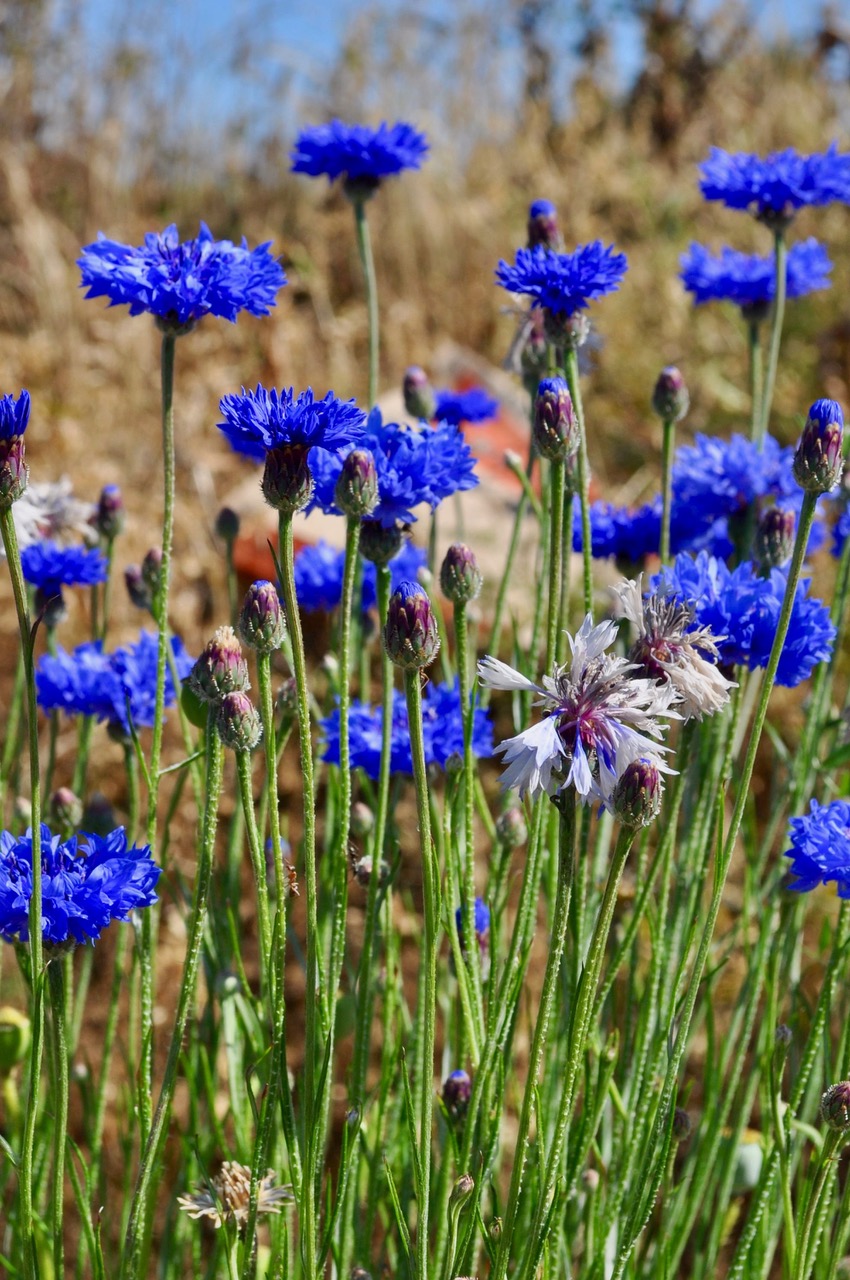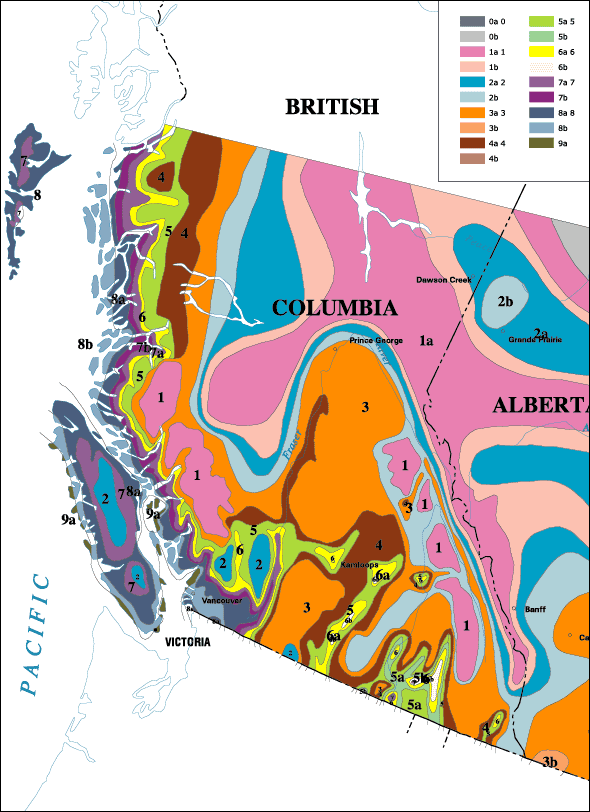Selecting bee forage plants
When selecting forage plants for bees, it is important to consider the following factors:
- Climatic conditions, as it relates to winter hardiness
- Esthetic considerations to the local landscape
- Moisture during summer
- Maintenance requirements of planted bee forage, e.g., pruning, re-seeding
- Seasonal availability and costs
- Soil quality and drainage
Bee forage plant list
The following plants are recommended selections to provide bee forage. This list is not all inclusive; there are many other nectar and pollen bearing plants that may also be suitable. The current listing includes plants that were selected for various traits including:
- Attractiveness to wild pollinators
- Availability
- Ease of growth and suitability for landscaping
- Non-invasive growth habit
- Occurrence and duration of flowering
Common name: Lupine
Scientific name: Lupinus sp.
Description: Bold perennial with beautifully fingered leaves and erect, cylindrical spikes of flowers in early summer. Blooms for a few weeks only. Many cultivars with different colors. Attractive to bumble bees and long-tongued pollinators.
Common name: Lavender
Scientific name: Lavandula angustifolia, L. multifida (Spanish)
Description: Frost hardy. From early to late summer, long-stalked spikes with small, fragrant violet flowers rise above narrow gray-green leaves. Long flowering perennial. Different varieties flower at different times. Prefers well-drained soil. Full sun. Highly attractive to all pollinators.
Common name: Borage, Star Flower
Scientific name: Borago officinalis
Description: Annual and perennial. Grown for oil, culinary use and flowers. Hairy leaves. Very hardy. Requires fertile, well-drained soil and sun. Flowers from June-September. Flowers start as pink and change colour to blue/blue. Highly attractive to all pollinators. Prolific, may become invasive.
Common name: Cranesbills
Scientific name: Geranium sp.
Description: Herbacious perennial. Attractive blue flowers from mid-summer onward. Frost tolerant. Excellent for borders and along hedge rows. Attracts all pollinators.
Common name: Bigroot Geranium
Scientific name: Geranium macrorrhizum
Description: Herbacious perennial. Geranium macrorrhizum is a widely cultivated ornamental for gardens. The herbaceous perennial is used as a groundcover, ranging in color from white through pink to magenta. Attracts all pollinators throughout early summer.
Common name: Hyssop
Scientific name: Hyssopus officinalis
Description: Perennial. Member of the mint family with aromatic, narrow leaves. Small, scented pink to blue/purple flowers appear in mid-summer to fall which are highly attractive to bees. Produces large amount of seed which attracts birds in winter. Self seeding.
Common Name: Anise Hyssop
Scientific Name: Agastache rugosa
Description: Summer-flowering perennial with aromatic leaves and spikes of blue-purple flowers. Ideal for landscaping in combination with other floral sources. Highly attractive to bees and butterflies. Needs fertile, well-drained soil and full sun.
Common name: Phacelia
Scientific name: Phacelia tanacetifolia
Description: Upright annual with feathery deep green leaves and spikes of bell-shaped lavender-blue flowers. Blooms through much of the summer. Profuse nectar producer. Deep-purple pollen. Highly attractive to all pollinators. Propagates readily through seeds. Suitable along hedgerows, borders and farm fields.
Common Name: Catmint
Scientific Name: Nepeta sp.
Description: Perennial forms mounds of grayish green leaves with spikes of small lavender-blue flowers from early summer to fall. Highly attractive nectar source of all pollinators and hummingbirds. Frost tolerant. Easily propagated through cuttings. Low maintenance, ideal for borders and edges of farm fields.
Common name: Fuschia
Scientific name: Fuchsia magellanica
Description: Attractive perennial. Only select frost hardy varieties. Attractive nectar source to bees and hummingbirds. Long blooming period. Needs pruning. Excellent for borders and hedges in gardens and along farm fields.
Common name: Onion, Chives, Garlic
Scientific name: Allium spp. Allium schoenoprasum (Chives)
Description: Allium spp. Perennial. Wide variety of edible and ornamental onions. Most are highly attractive to pollinators when in bloom from May to July.
Common name: Butterfly Weed
Scientific name: Asclepias tuberosa
Photo Credit, John W. Marr
Description: Winter hardy, herbaceous perennial highly attractive to all pollinators. Lush foliage, ideal for borders. Not to be confused with invasive species of A. speciosa and A. syriaca.
Common name: Bee Balm, Wild Bergamot
Scientific name: Monarda fistulosa
Description: Wild bergamot is perennial and native to North America. It produces rhizomes and forms large clumps. Clusters of fragrant flowers produce copious nectar from June to September and are highly attractive to bees. Plants grow to about 1 m in height.
Common name: Sweet Clovers
Scientific name: Melilotus sp.
Description: Common in many different habitats and climates. Propagates rapidly and is drought resistant. Produces fragrant yellow or white flowers attractive to all pollinators throughout the summer. Tolerant of poor, gravely soils. Suitable for reclamation projects.
Common name: Coneflower
Scientific name: Asteraceae spp.
Description: Many different varieties in red, pink and white. Grows well in poor soils. Some varieties highly winter hardy. Attractive to many wild pollinators.
Common name: Scabious Pincushion Flower
Scientific name: Scabiosa spp.
Description: Annual and perennials. Wide variety of colors from white to purple. Large, ball-shaped flowers from mid-summer to fall. Profuse nectar producer. Ideal in borders.
Common name: Golden Rod
Scientific name: Solidago sp.
Description: Hardy, summer to fall flowering perennial. Vigorous growth that may crowd other plants. Ideal for roadsides and wild areas. Tolerant to full sun or shade in poor, well-drained soils. Attractive to wide range of insects.
Common name: Eryngium, Sea Holly
Scientific name: Eryngium spp.
Description: Biennials and perennials, thistle-like, blue to lavender-blue flowers mid to late summer. Best in well-drained soil and full sun. Excellent in landscaped borders. Different varieties, all are highly attractive to bees.
Common name: Snapdragon
Scientific name: Antirrhinum sp.

Description: Large family with many different cultivars. Annual. Great variety of colours from deepest pinks, reds and yellows. Profuse flowers in early to late summer. Highly attractive to long-tongued pollinators including bumble bees. Not to be confused with Snapdragon, Common Toadflax Linaria dalmatica.
Common name: Fleabane
Scientific name: Erigeron alpinus
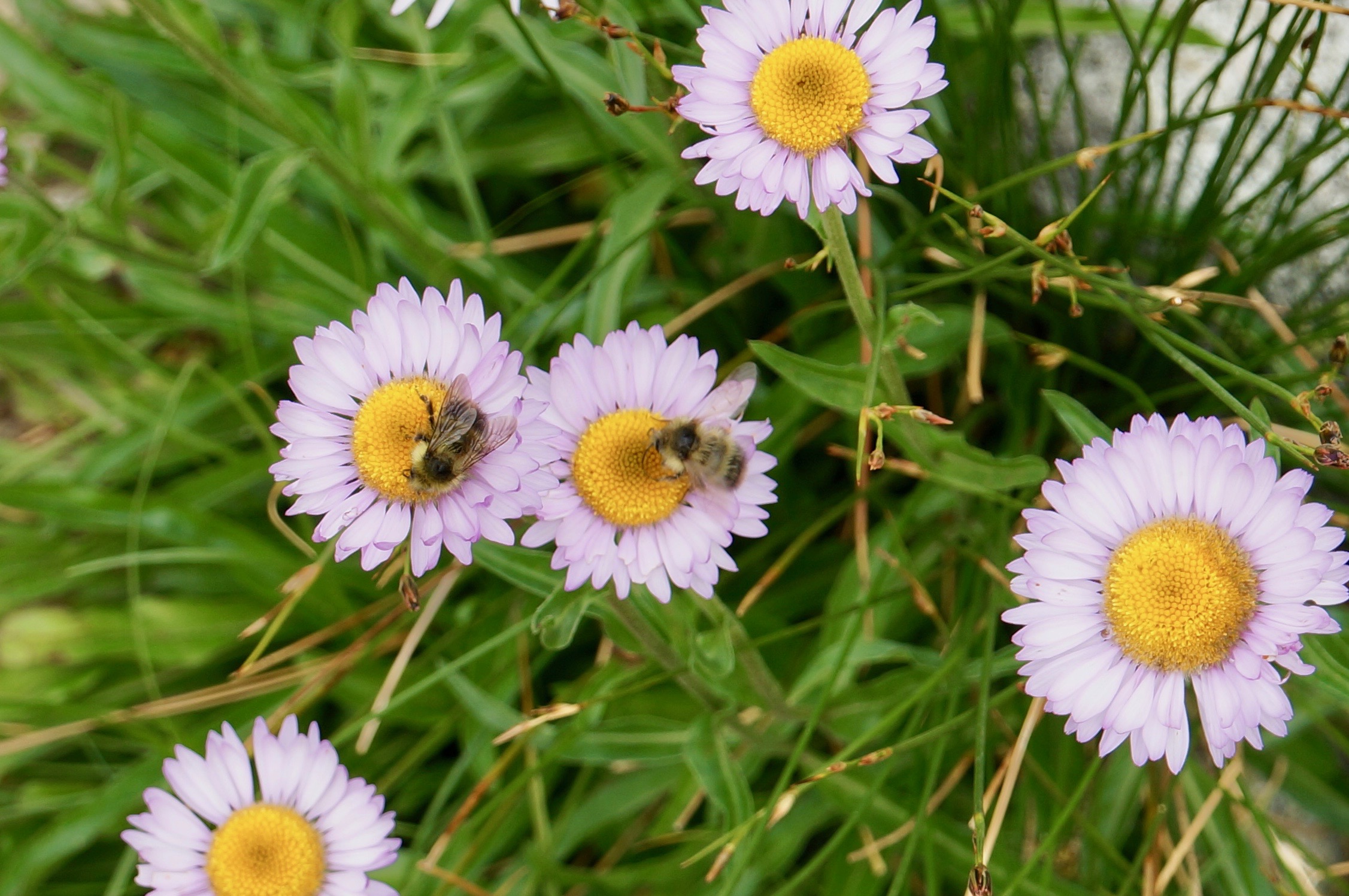
Description: Clump forming perennial with daisy-like, lilac to deep-purple flowers. Winter hardy. Suitable in rocky, disturbed soils. Highly attractive to bumble bees and solitary pollinators. Annual and perennial ornamentals similar to asters.
Common name: Spider Flower, Rocky Mountain Bee Plant
Scientific name: Cleome sp.
Description: Fast growing bushy annual. Frost sensitive. Large, striking rounded head of narrow pink-flushed flowers in mid-summer. Attractive to bees and hummingbirds.
Common name: Foxglove
Scientific name: Digitalis sp.
Description: Commonly found in the wild. Mostly pink. Cultivars with different colors. Highly attractive to bumble bees and various solitary pollinators. Self-seeding. Mid-summer.
Common name: Artichoke
Scientific name: Cynara sp.
Description: Tall, stately perennial with large thistle-like, blue-purple flower head on grey stems. Ideal in borders.
Common name: Hollyhocks
Scientific name: Alcea sp.
Description: Tall annual / biannual. Numerous large flowers along the primary stem. Blooms from mid to late summer. Attractive pollen source for most pollinators.
Common name: Verbena
Scientific name: Verbena sp.
Description: Annual and perennial. Forms cluster heads with light purple flowers. Attracts wide variety of pollinators including butterflies. Mid to late summer.
Common name: Black-eyed Susan
Scientific name: Rudbeckia hirta
Description: Native to North America. Bright yellow daisy-like flower heads. Tolerant to poor, gravely soils, heat and drought resistant. Cultivated varieties include oranges and reds. Attractive to butterflies, bumble bees and solitary bees.
Common name: Sunflower
Scientific name: Helianthus spp.
Description: Annual. Many different varieties. Flowers from May to July. Highly attractive to all wild pollinators. Seeds attractive to songbirds.
Common name: Veronica
Scientific name: Veronica spp.
Description: Perennial. Blue, purple, white varieties. Excellent in borders. Tall, tapered spires attracting bees and butterflies from spring to late summer.
Common name: Lavatera
Scientific name: Lavatera sp. (aka Malva)
Description: Annual. Large, hibiscus-like flowers on bushy plants bloom from June to September. Attracts long-tongued pollinators including bumblebees and butterflies. Prefers sunny location with well-drained soil.
Common name: Cornflower
Scientific name: Centaurea cyanus
Description: Annual. Edible plant parts. Different cultivars; most have blue, purple flowers. Considered a beneficial weed as it attracts bees and hover flies. Flowers from April to June. Not to be confused with other Knapweeds of which some are highly invasive.
Common name: Poppy
Scientific name: Papaver sp.
Description: Annual and perennials. Red, pink and white cultivars with large, showy flowers. Highly attractive to bees for copious pollen. Ideal in borders. Drought resistant.
Common name: Sage, Salvia
Scientific name: Salvia
Description: Annual and perennials. Blue, purple and lilac most common colors. Intricate flower shape attracts bumble bees and other long tonqued-pollinators. Excellent for landscaped borders.
Common name: Heather
Scientific name: Erica sp.
Description: Perennials. Large family with many different varieties. Some flower at the earliest of spring while others bloom in summer and fall. Widely planted for visual effect in borders. Drought resistant and often tolerates sandy, gravely soils. Under right conditions, it can be an important nectar source for many different pollinators.
Plant suppliers and contacts
Contact information
Do you have questions? Contact us.
778-666-0582

